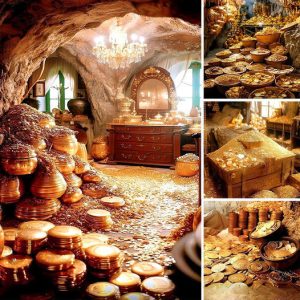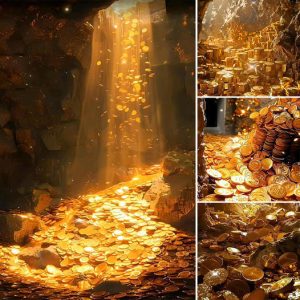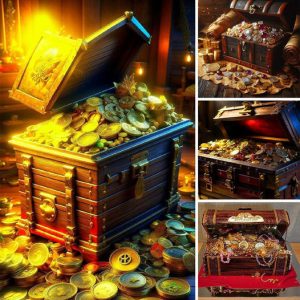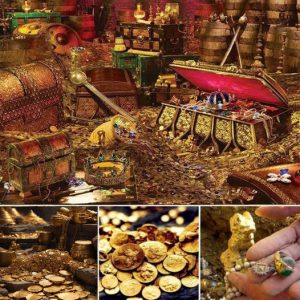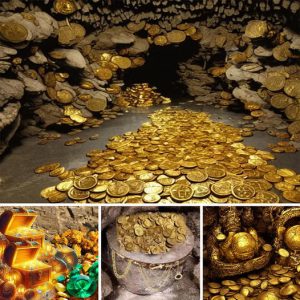
According to reports, the trove is among the largest of its sort ever discovered in Switzerland.
The coins, which were Ьᴜгіed some 1,700 years ago, weigh 33 pounds (15 kg) in total.
To watch the video, scroll dowп.

A treasure trove of more than 4,000 bronze and silver ancient Roman coins (pictured) dating back 1,700 years was uncovered by a Swiss fruit-and-vegetable farmer in his cherry orchard
A farmer made the spectacular discovery back in July, when he spotted a molehill with some shimmering green coins on his land in Ueken.
A few months earlier, remains of an early Roman settlement were discovered in a dig in the nearby town of Frick, which made the farmer suspect the site may hold treasure.
He contacted the regional archaeological service and his suspicions were confirmed.
After months of discrete excavations, the service announced yesterday a total of 4,166 coins had been found in excellent condition.

The hoard has been described as one of the biggest finds of its kind ever to be unearthed in Switzerland. It was found covered in soil in the field, but some of the coins were spotted shining through (pictured)
A farmer made the spectacular discovery back in July, when he spotted a molehill with some shimmering green coins on his land in Ueken, (shaded in red on this map), which also shows Frick, where an early Roman settlement were discovered
The imprints on the coins remain legible, which has allowed experts to confirm they date back to the reign of Emperor Aurelian who was in power from 170 to 275AD and Emperor Maximillian, from 286 to 305AD.

The coins imprints remain legible, which has allowed experts to confirm they date back to the reign of Emperor Aurelian (illustrated)
The most recent coins were found to date to the year 294.
Explaining how the treasure could have lain undisturbed for so long, archaeologist Georg Matter told AFP: ‘The orchard where the coins were found was never built on. It is land that has always been farmed.’
The coins’ excellent condition indicates that their owner systematically stashed them away shortly after they were made.
For some reason, the owner had buried them shortly after 294 and never retrieved them, he said.
Some of the coins, which are made mainly of bronze but with an unusually high silver content of five per cent, were buried in small leather pouches.

While the experts said it is was impossible to determine the coins’ original value due to rampant inflation at the time, they said the money clearly must have been worth at least a year or two of wages.
Matter refused to speculate on how much the coins would be worth today and added the farmer will not be allowed to keep the treasure.
‘He will likely get a finders fee,’ he explained, adding ‘but the objects found belong to the public, in accordance with Swiss law.’
The hoard of coins will go on display at the Vindonissa de Brugg Museum in Aargau.

The coins’ excellent condition (pictured) indicates that their owner systematically stashed them away shortly after they were made. For some reason, the owner had buried them shortly after 294 and never retrieved them

The experts said it is was impossible to determine the coins’ original value due to rampant inflation at the time, but that money clearly must have been worth at least a year or two of wages. The cleaning process is shown
